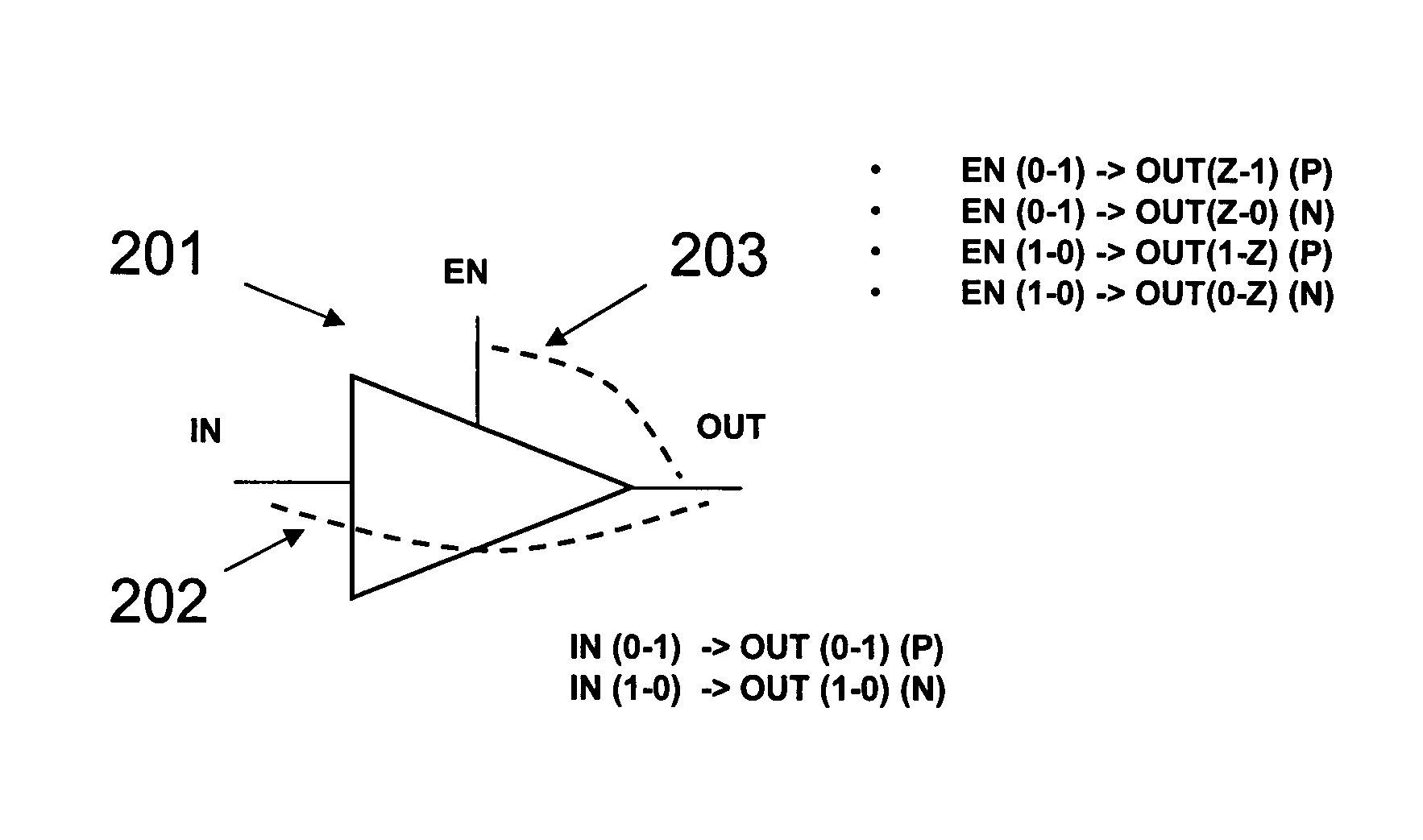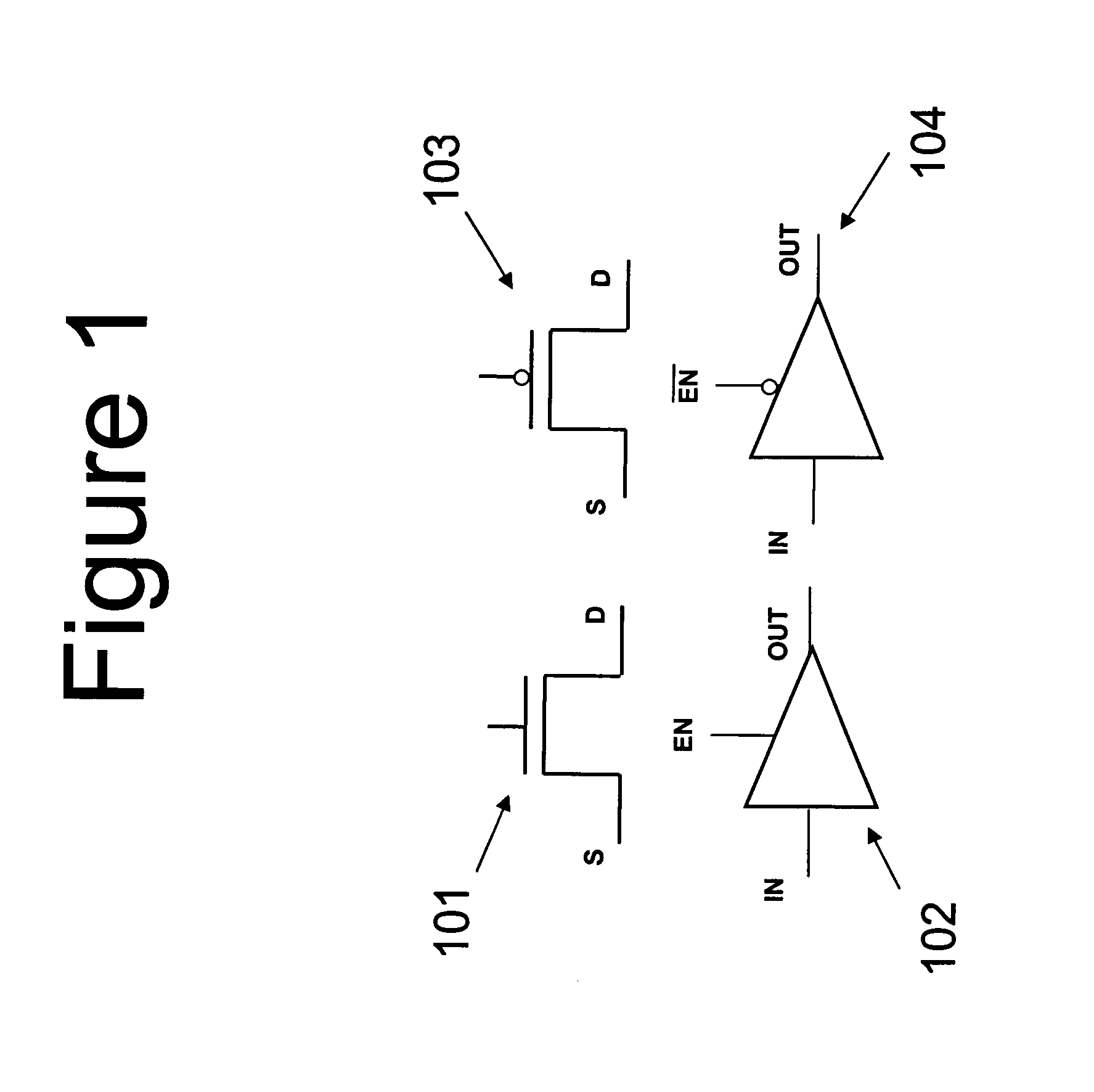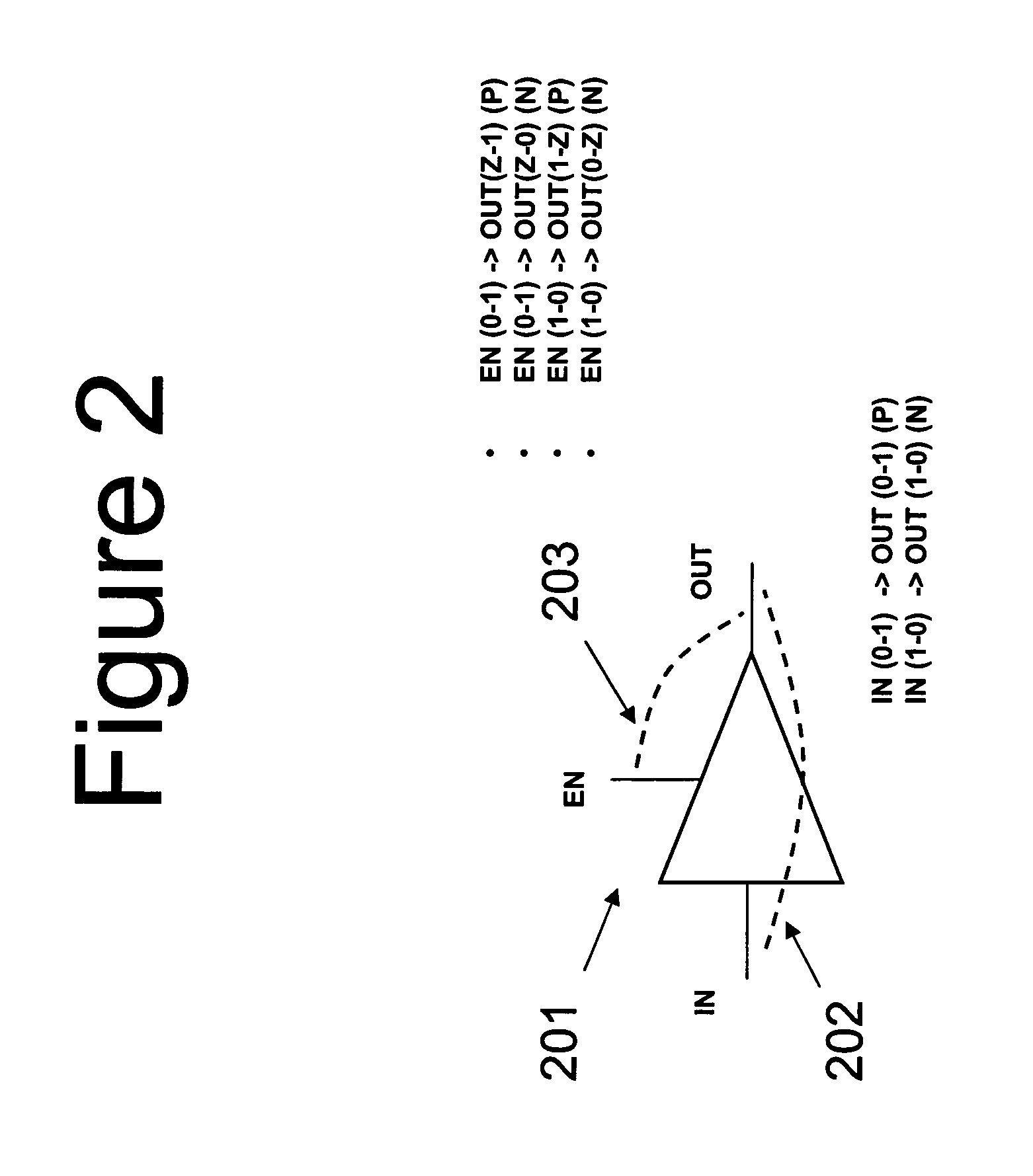System and method for performing transistor-level static performance analysis using cell-level static analysis tools
a technology of static analysis and transistor level, applied in the field of transistor-level static analysis spa methods, can solve the problems of less robust tool suite available for sta at the transistor level than at the cell-level, impracticality, and less widely available cell-level timing tools, etc., to achieve excellent incremental accuracy, excellent absolute accuracy, and extremely fast runtime
- Summary
- Abstract
- Description
- Claims
- Application Information
AI Technical Summary
Benefits of technology
Problems solved by technology
Method used
Image
Examples
Embodiment Construction
of Proposed Method
[0033]Referring to FIG. 6, a cell level model for a two-FET inverter 600 has a worst case rise time when the buffer 601, which models a PMOS FET, is enabled. Likewise, the worst case fall time for inverter 600 occurs when the buffer 602, which models an NMOS FET, is enabled. The gate->drain delay of the PMOS FET modeled by buffer 601 (arc 603) is used for rise time analysis. Similarly, the gate->drain delay of the NMOS FET modeled by buffer 602 (arc 604) is used for fall time analysis.
[0034]Referring to FIG. 7, a cell level model representing a NAND gate 700 has a worst case rise time when one of the PMOS FETs modeled by buffers 701 and 702“turns on.” The slower of the two arcs 705 is used by the STA engine. The case for fall time analysis is more complicated, and is handled as discussed in the text accompanying FIG. 3. The figure shows the arcs 706 and 707 only for the case where AT(A2)+DG2+DS1>AT(A1)+DG1.
[0035]Referring to FIG. 8, for a multi-stage AND gate 800 t...
PUM
 Login to View More
Login to View More Abstract
Description
Claims
Application Information
 Login to View More
Login to View More - R&D
- Intellectual Property
- Life Sciences
- Materials
- Tech Scout
- Unparalleled Data Quality
- Higher Quality Content
- 60% Fewer Hallucinations
Browse by: Latest US Patents, China's latest patents, Technical Efficacy Thesaurus, Application Domain, Technology Topic, Popular Technical Reports.
© 2025 PatSnap. All rights reserved.Legal|Privacy policy|Modern Slavery Act Transparency Statement|Sitemap|About US| Contact US: help@patsnap.com



